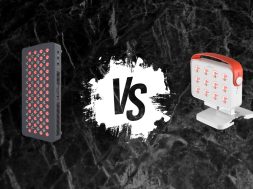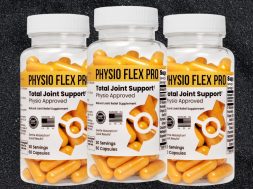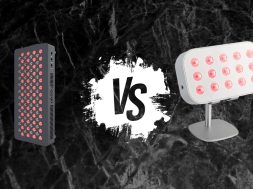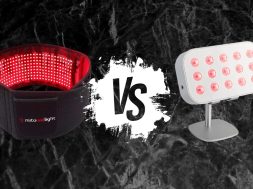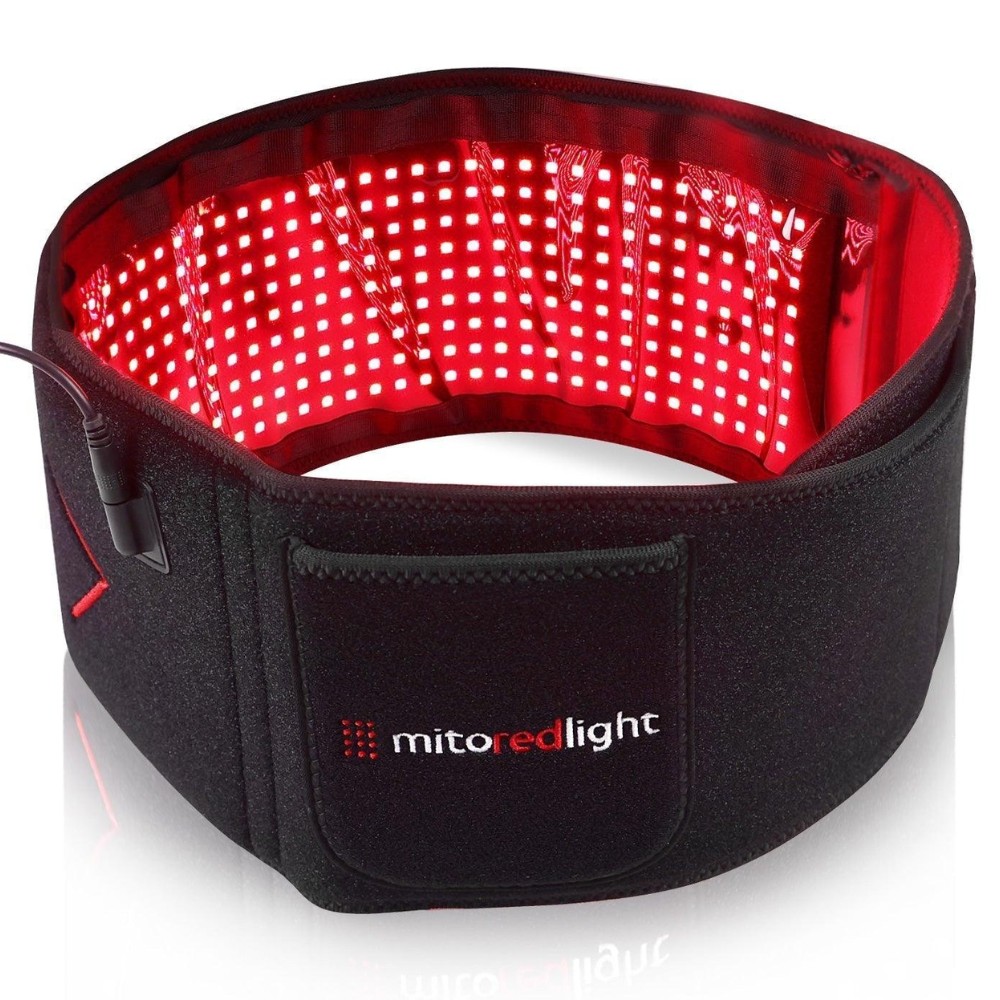
For athletes, lifters, and anyone who’s past their twenties still pushing hard in the gym or on the mats, recovery becomes the real battle.
Soreness, stiffness, and lingering inflammation start to dictate training frequency more than motivation does. That’s where red light therapy has stepped in as a recovery tool that doesn’t rely on pills, ice baths, or stretching sessions you’ll probably skip.
Over the past few years, red and near-infrared light therapy devices have evolved from gimmicky gadgets into legitimate recovery tools used by professional athletes, physical therapists, and performance coaches. Among the many options out there, two names often stand out: the MitoQUAD Wavelength Belt and the Joovv Go 2.0.
Both promise faster recovery, less inflammation, and better joint mobility, but they take very different approaches. After testing both in real-world conditions, here’s how they stack up and why the MitoQUAD ultimately comes out on top.
Quick Verdict
| Feature | Winner |
|---|---|
| Performance & Effectiveness | Mito |
| Wavelengths | Mito |
| Design & Build Quality | Draw |
| Ease of Use | Mito |
| Battery | Joovv |
| User Reviews | Mito |
| Price | Mito |
Quick Verdict
Both devices perform well, but the MitoQUAD Wavelength Belt stands out as the more complete recovery tool.
Its quad-wavelength system (630nm, 660nm, 810nm, 850nm) and dense 1,215-chip array deliver powerful, full-coverage therapy that actually makes a difference after hard training sessions.
The hands-free design and medical-grade build make it practical for daily recovery and long-term use.
The Joovv Go 2.0 is sleek and portable, but its limited coverage, short sessions, and handheld format make it less effective for serious athletes.
If your goal is deeper recovery and lasting performance benefits, the MitoQUAD is the better investment.
What Is Mito Red Light?
The MitoQUAD Wavelength Belt from Mito Red Light is a professional-grade red light therapy device designed to bring full-power photobiomodulation into a wearable, hands-free format. Unlike panel systems that require you to stand motionless for 20 minutes, the MitoQUAD wraps around your waist or back, letting you work, read, or even stretch while receiving treatment.
The belt uses TriChip technology, packing 405 LEDs with three chips each, totaling 1,215 light sources across the device. These emit four clinically supported wavelengths:
- 630nm and 660nm (red light) for surface-level effects like improved circulation, collagen synthesis, and reduced inflammation.
- 810nm and 850nm (near-infrared light) that penetrate deeper into muscles and connective tissue to support mitochondrial energy production and tissue repair.
This combination is where the MitoQUAD shines. Many cheaper or smaller devices only offer one or two wavelengths, but the MitoQUAD covers the full range used in most clinical studies on recovery, pain relief, and inflammation reduction.
The flexible silicone design contours to your body, providing uniform light exposure across the entire treatment zone, making it ideal for the core, lower back, or hips, which are often overworked in strength training, running, or grappling.
The materials feel durable and medical-grade, which aligns with the device’s IEC 60601 safety certification, the same standard used for hospital-approved medical equipment.
Five intensity levels let you customize treatment sessions, from gentle warmth for daily recovery to stronger heat for deeper therapy. Most users run 15-20-minute sessions, two or three times a day, depending on training volume or pain levels.
While it’s a corded device (not battery-powered), that trade-off means consistent output and no performance drop-off, which you’ll appreciate during longer recovery sessions. You can read my Mito Red Light review for my experience.
Pros:
- Quad-wavelength coverage (630 / 660 / 810 / 850 nm) for surface and deep-tissue recovery
- Dense LED layout (1,215 chips) ensures even light distribution
- Hands-free operation
- Medical-grade build and IEC 60601 certification
- Noticeably improves post-training soreness and mobility
Cons:
- Corded power limits true portability
- Best suited for core and back and less effective on joints like shoulders or knees
- Slightly bulky to store or travel with
- Premium pricing compared to basic red-light belts
What Is Joovv?
The Joovv Go 2.0 is a premium handheld red light therapy device built for portability and targeted treatments. It’s the smaller sibling of Joovv’s full-size panels.
Compact enough to fit in a gym bag but still engineered with the same clinical precision that made the brand one of the first big names in the red light space.
The Go 2.0 delivers dual wavelengths of 660nm (red) and 850nm (near-infrared), which are the two most researched spectrums for photobiomodulation. These target both surface-level and deep-tissue recovery, supporting blood flow, cellular energy production, and inflammation control.
What separates Joovv’s design from most portable devices is its build quality and tech integration. The Go 2.0 connects to the Joovv smartphone app via Bluetooth, offering mode selection (red, NIR, or both), treatment tracking, and even a Recovery+ pulsed light mode, which alternates light output to stimulate cells in a slightly different way.
The app also provides treatment reminders and usage history, which is a nice touch for consistency, though connection issues can occasionally interrupt the flow.
The device runs on a built-in rechargeable battery and includes a sleek charging dock, which doubles as a display stand. Each treatment session lasts 10 minutes, with automatic shutoff to prevent overexposure. It’s simple, safe, and efficient, but also restrictive if you want longer or consecutive sessions on multiple areas.
In use, the Joovv Go 2.0 feels premium. The housing is solid, the silicone grip comfortable, and the heat output noticeable but never uncomfortable. It’s ideal for small-area recovery and for frequent travelers who want a compact recovery option without hauling panels or belts around.
That said, the small light field means coverage is limited, and you’ll need to manually hold or reposition the device for each treatment zone. For larger muscle groups or deeper injuries, this can get tedious fast. You can read my Joovv review for my experience.
Pros:
- Dual-wavelength red and NIR therapy (660nm / 850nm)
- Excellent portability — ideal for travel or quick daily use
- Premium design and durable construction
- Pulsed “Recovery+” mode for added therapeutic variation
- Rechargeable battery with convenient dock
- Medical-grade safety certification
Cons:
- Small treatment area — not suitable for full coverage
- Fixed 10-minute session limit with no manual override
- Requires holding in place (not hands-free)
- Occasional Bluetooth connection issues
- High price for its size and output
Mito Red Light vs. Joovv Main Differences
Performance and Effectiveness
When it comes to sheer performance, the MitoQUAD Wavelength Belt clearly delivers a stronger, more comprehensive recovery effect. Its 1,215-chip LED array produces significantly higher light density and total energy output compared to the Joovv Go 2.0’s small handheld panel. In practice, that means better coverage, deeper warmth, and more noticeable post-session relief.
During testing, the MitoQUAD consistently improved muscle recovery and stiffness after heavy lower-body training, particularly around the lower back, hips, and abs. The heating effect was immediate and soothing, and soreness was reduced by the next day.
The Joovv Go 2.0, while effective, is more limited in scope. It performs best for localized relief, such as easing shoulder or knee tension after grappling, or reducing soreness around smaller joints. The therapeutic effect is there, but less pronounced, and it takes more time and repositioning to achieve similar overall results.
In short, the MitoQUAD feels like a true recovery tool, while the Joovv Go 2.0 functions more as a convenience device for light therapy on the go.
Wavelengths
The MitoQUAD uses a quad-wavelength system (630nm, 660nm, 810nm, and 850nm), covering both the red and near-infrared spectrums extensively.
This allows for both surface-level effects (improved circulation, reduced inflammation) and deep-tissue benefits (enhanced mitochondrial repair and muscle recovery). The result is a more comprehensive treatment that supports both skin and muscle health.
The Joovv Go 2.0 uses two wavelengths — 660nm (red) and 850nm (NIR). These are the gold-standard wavelengths in photobiomodulation research, and they absolutely work, but they don’t reach quite the same depth or range of tissue targets as the MitoQUAD’s four-wavelength blend.
While both devices are backed by science, the MitoQUAD’s expanded wavelength profile gives it a clear edge for athletes who want deeper recovery and full-spectrum cellular stimulation.
Design and Build Quality
Design-wise, both devices are built to last, but they cater to different user types.
The MitoQUAD Belt is heavier (around 1.2 lbs) but extremely solid, made from flexible, medical-grade silicone that wraps comfortably around the body.
It feels substantial and secure, and the design distributes light evenly across the treatment area. The belt’s fixed shape makes it perfect for the core and lower back, though less adaptable to smaller joints.
The Joovv Go 2.0 feels more like a premium tech gadget. It’s sleek, compact, and portable. The matte casing, responsive button layout, and ergonomic silicone grip give it an Apple-like finish.
It’s ideal for travel or quick sessions, but its small size and handheld nature limit comfort during longer treatments.
If you value hands-free convenience and full coverage, MitoQUAD wins. If you value mobility and style, Joovv takes the edge.
Ease of Use
Both devices are beginner-friendly, but they are used in different ways.
The MitoQUAD excels in simplicity. You plug it in, wrap it around your core, and choose one of five intensity levels — that’s it. Once on, you can move freely, work at a laptop, or relax while the light does its job. It’s ideal for multitasking and consistency.
The Joovv Go 2.0 offers more tech features but slightly less practicality. The Bluetooth app integration is useful for tracking and fine-tuning sessions, but it can be glitchy. T
he fixed 10-minute timer also feels limiting, especially when treating multiple areas. You’ll need to hold the device in place or prop it up, which can get tiring over longer use.
For daily, hands-free recovery, MitoQUAD wins easily. For targeted treatments and advanced tracking, Joovv’s system is more sophisticated, though not necessarily more effective.
Battery Life and Hardware
This is where the two devices diverge the most.
The MitoQUAD is corded only, meaning it runs on AC power with no internal battery. That might seem like a limitation, but it ensures consistent light output and zero downtime since there is no need to charge, no performance drop-offs, and no overheating. It’s designed more like a stationary recovery tool than a portable gadget.
The Joovv Go 2.0, meanwhile, is fully wireless and rechargeable. On a full charge, it provides around 6–8 sessions (depending on mode and brightness).
The included charging dock is well-designed and doubles as a stand for hands-free use on flat surfaces. However, the device needs cooldown periods between sessions, which can slow down consecutive treatments.
In practical use, the MitoQUAD feels rugged and consistent. The Joovv Go 2.0 feels convenient but is limited by battery cycles — fine for quick sessions, but not ideal for heavy, daily use.
Price
| Device | Price (USD) | Wavelengths |
| MitoQUAD Wavelength Belt | $350 | 630 / 660 / 810 / 850 nm |
| Joovv Go 2.0 | $499 (no dock) / $599 (with dock) | 660 / 850 nm |
The MitoQUAD offers more wavelengths, higher coverage, and stronger output for roughly $150–$250 less than the Joovv Go 2.0.
While Joovv carries a premium brand image and app integration, MitoQUAD simply delivers more performance for the money, especially for athletes and active users who prioritize muscle recovery over aesthetics or tech features.
My Experience Using Mito Red Light & Joovv
Over the past several months, I’ve used both the MitoQUAD Wavelength Belt and the Joovv Go 2.0 across different phases of training, including strength blocks, grappling prep, and regular conditioning work.
My focus was simple: reduce soreness, speed up recovery between sessions, and stay loose enough to train consistently without relying on ice or pain meds.
I started with the MitoQUAD, using it primarily on my lower back and hips, which are the areas that tend to get beaten up the most after heavy squats, snatches, and open mat sessions.
My setup routine became automatic: plug it in after training, wrap it around my waist while answering emails or reviewing footage, and run it for around 18–20 minutes on intensity level 3.
By the end of the first week, I noticed the difference. The morning stiffness I usually feel after a heavy session started to fade. Recovery between sessions improved, and I felt more mobile during warm-ups. Over time, the belt became part of my daily recovery rhythm, not something I had to remind myself to use.
The comfort and convenience are also notable. The belt’s warmth is immediate and steady, not sharp or artificial like heat pads. The silicone build conforms nicely, and even though it’s corded, the hands-free design meant I could move around the house without breaking treatment.
When I later switched to the Joovv Go 2.0, the experience shifted completely. The first thing you notice is how premium it feels — sturdy, compact, and comfortable in the hand.
I used it mainly on shoulders, neck, and knees, rotating areas every few days. The 10-minute auto shutoff made it simple to build into a routine, but it also made me wish for longer sessions when trying to treat larger muscle groups.
The Recovery+ pulsed mode worked well for smaller problem spots, like my chronically tight left shoulder. It provided good short-term relief and felt great post-grappling, but the effect was more subtle compared to the deep, sustained warmth of the MitoQUAD.
Holding the device in place also became tedious after a while, especially when trying to hit multiple areas consecutively.
One thing Joovv does extremely well, though, is portability. I took it on a trip and appreciated being able to use it in a hotel room without cords or setup.
For frequent travelers or anyone who wants quick therapy during downtime, it’s fantastic. But for day-to-day athletic recovery, the small coverage area just can’t compete with the belt’s output and ease of use.
If I had to summarize the difference, I’d say this:
The Joovv Go 2.0 is an impressive spot-treatment tool, but the MitoQUAD Belt is a true recovery system. It’s stronger, more efficient, and easier to integrate into a real training lifestyle.
Should You Choose Mito Red Light or Joovv
Choosing between these two really comes down to how you plan to use red light therapy and what your recovery routine actually looks like in real life.
If your main goal is real recovery from training, the MitoQUAD Wavelength Belt is the clear winner. It’s built for people who train hard and need something powerful, hands-free, and reliable.
The dense LED layout and four wavelengths give it both depth and coverage that handheld devices simply can’t match. You can strap it on after a heavy squat day, while watching film, or during work, and know that you’re getting a genuine physiological benefit without having to hold a device in place.
It’s also ideal for people dealing with chronic lower back tension, hip soreness, or general inflammation from high-volume training or long hours sitting. The design targets exactly those problem areas that most athletes and professionals struggle with.
The Joovv Go 2.0, on the other hand, is best for quick, targeted sessions. If you travel often, deal with smaller joint issues (shoulders, elbows, knees), or just want a convenient way to get your daily dose of red light therapy, it’s a solid option. It feels premium, it’s backed by clinical research, and it’s easy to toss in a gym or travel bag.
But for consistent, whole-zone recovery, especially for athletes, lifters, or fighters, the MitoQUAD simply delivers more for less. It covers larger muscle groups, hits both surface and deep tissue, and feels like a professional recovery tool rather than a wellness gadget. The difference becomes obvious after a few weeks of daily use.
MitoQUAD Wavelength Belt
MitoQUAD Wavelength Belt
Powerful red light therapy device designed be applied without having to sit in front of a large light panel.
CHECK CURRENT DEALS

